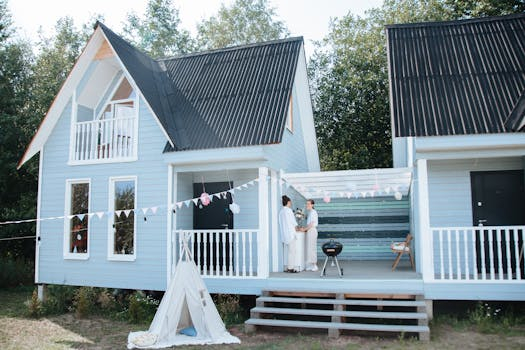ADUs Go Mainstream: How Backyard Cottages Ease Housing Crises
The lack of affordable housing has become a major issue in many cities and towns across the world. With rising rent prices and limited availability, many communities are facing a serious housing crisis. In response to this problem, more and more people are turning to alternative housing options such as Accessory Dwelling Units (ADUs), popularly known as backyard cottages. These small secondary units built on the same lot as a primary residence have been gaining attention and traction as a solution to ease housing crises. In this article, we will explore how ADUs are going mainstream and how they can help alleviate the current housing crisis.
The Rise of ADUs
ADUs have been around for decades, but have recently gained renewed popularity due to the growing affordable housing crisis. According to a recent survey by the National Association of Home Builders, ADU construction has increased by 10% since 2017 and continues to be on the rise. This trend is particularly significant in high-demand areas such as California and Seattle, where these units are becoming a popular choice for homeowners and renters alike.
What Are ADUs?
In simple terms, ADUs are small, self-contained residential units that are built on the same lot as a primary residence. They can be attached, detached, or converted from an existing structure such as a garage or basement. These units typically have their own entrance, kitchen, and bathroom, and can range in size from a studio to a small one-bedroom apartment.
One of the main reasons for the rising popularity of ADUs is their flexibility and versatility. They can be used as a rental unit for extra income, a home office, or as a living space for aging parents or adult children. ADUs are also a great option for homeowners looking to downsize without leaving their neighborhood.
The Benefits of ADUs
Aside from providing a solution to the housing crisis, there are many other benefits to building an ADU. Here are some of the most significant advantages:
Increased Affordable Housing
As mentioned before, ADUs are becoming increasingly popular as a solution to the shortage of affordable housing. These units not only provide affordable housing options for renters, but they also offer a source of additional income for homeowners.
Minimal Environmental Impact
Compared to building a new single-family home, ADUs have a much smaller environmental footprint. They use fewer resources and materials, making them a more eco-friendly housing solution.
Increased Property Value
ADUs are a great way to increase the value of a property without making significant structural changes. In areas with high demand for housing, having an ADU on the property can add to its attractiveness and resale value.
Support for Multi-Generational Living
In today’s world, many families live in multi-generational households. ADUs provide a solution for both privacy and close proximity to family members. They offer elderly parents or adult children a separate, yet connected living space.
The Future of ADUs
As the popularity of ADUs continues to grow, many cities and states are reviewing and updating their zoning laws and regulations to make it easier for homeowners to build these units. For example, in California, legislation was recently passed to streamline the process and remove many of the barriers to building ADUs.
Additionally, with the rise of the “tiny house” movement, ADUs are a natural extension of this trend for compact, minimalist living. As housing prices continue to climb, ADUs offer a viable alternative for homeowners and renters alike.
In Conclusion
ADUs are not a new concept, but they have emerged in recent years as a possible solution to the widespread housing crisis. These small, self-contained units provide affordable housing options, increase property values, and have minimal environmental impact. With the growing demand for alternative housing options, ADUs are likely to become even more mainstream in the future, providing an innovative solution to the current housing crisis.









